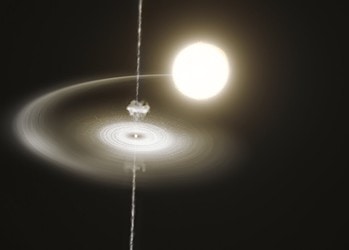A novel mathematical model can weigh the mass of a pulsar – a rapidly rotating magnetized neutran star – using principles of nuclear physics, rather than gravity. Up until now, the mass of a star could only be determined in relation with other bodies, based on the gravitational pull these exerted. Now, using the new model scientists will be able to study pulsars in isolation, allowing for more precise measurements than ever before.

When very massive stars die, typically in a supernova explosion, what’s leftover is a rotating neutron star that emits a focused beam of electromagnetic radiation, only visible if you’re standing in its path like a lighthouse. These rotating neutron stars are called “pulsars” in short because these emissions seem to be pulsing into outer space.
When a pulsar first forms, it has the most energy and fastest rotational speed. As it releases electromagnetic power through its beams, it gradually slows down. Within 10 to 100 million years, it slows to the point that its beams shut off and the pulsar becomes quiet. But although older pulsars rotate stably, the younger ones go through periods of slowing or speeding called ‘glitches’. Scientists think these glitches are caused by the motion of the superfluids found inside the neutron stars. This motion transfers energy, causing them to pick up rotation or slow down.
“Imagine the pulsar as a bowl of soup, with the bowl spinning at one speed and the soup spinning faster. Friction between the inside of the bowl and its contents, the soup, will cause the bowl to speed up. The more soup there is, the faster the bowl will be made to rotate,” says , Nils Andersson a Professor of Applied Mathematics at University of Southampton.
The Southampton team fed radio and X-ray data into their model to eventually determine the mass of pulsars that glitch. This could prove extremely useful for future, next generation observatories like the Square Kilometre Array (SKA) and the Low Frequency Array (LOFAR). “Our results provide an exciting new link between the study of distant astronomical objects and laboratory work in both high-energy and low-temperature physics. It is a great example of interdisciplinary science,” says Professor Andersson.






